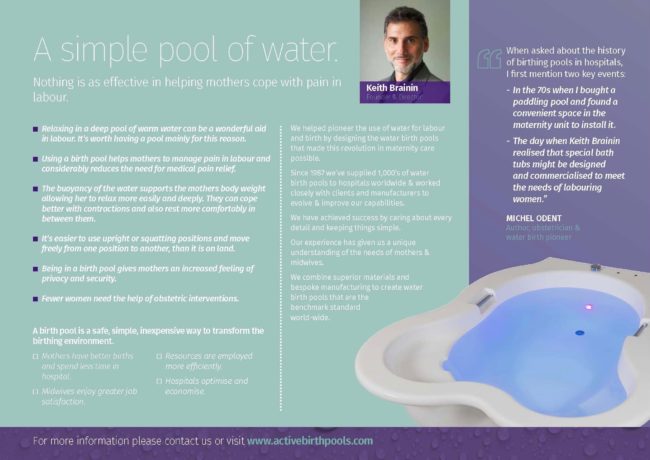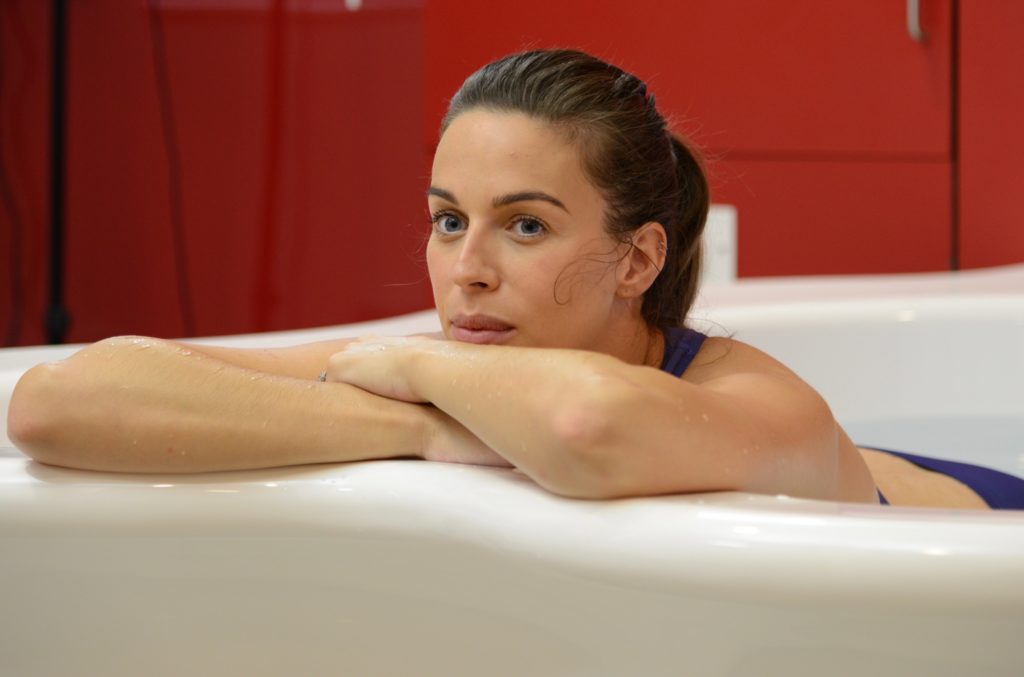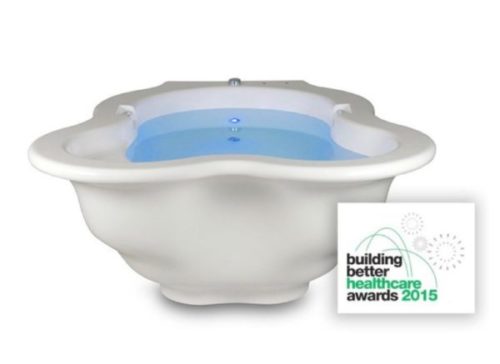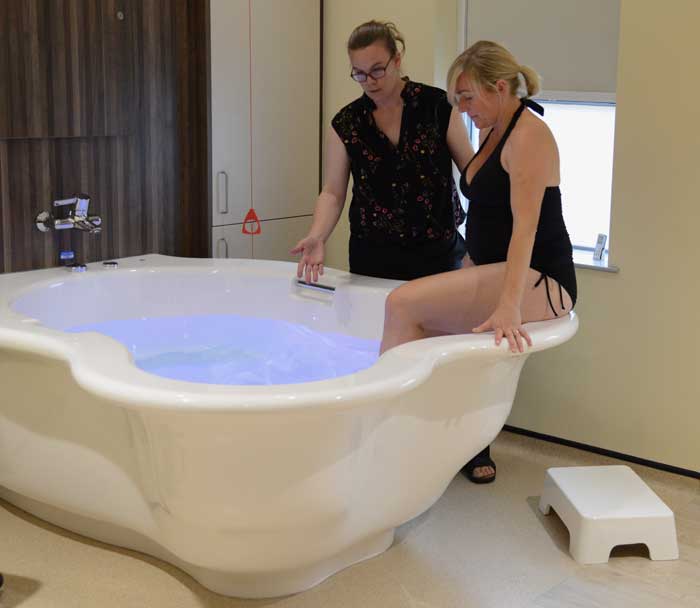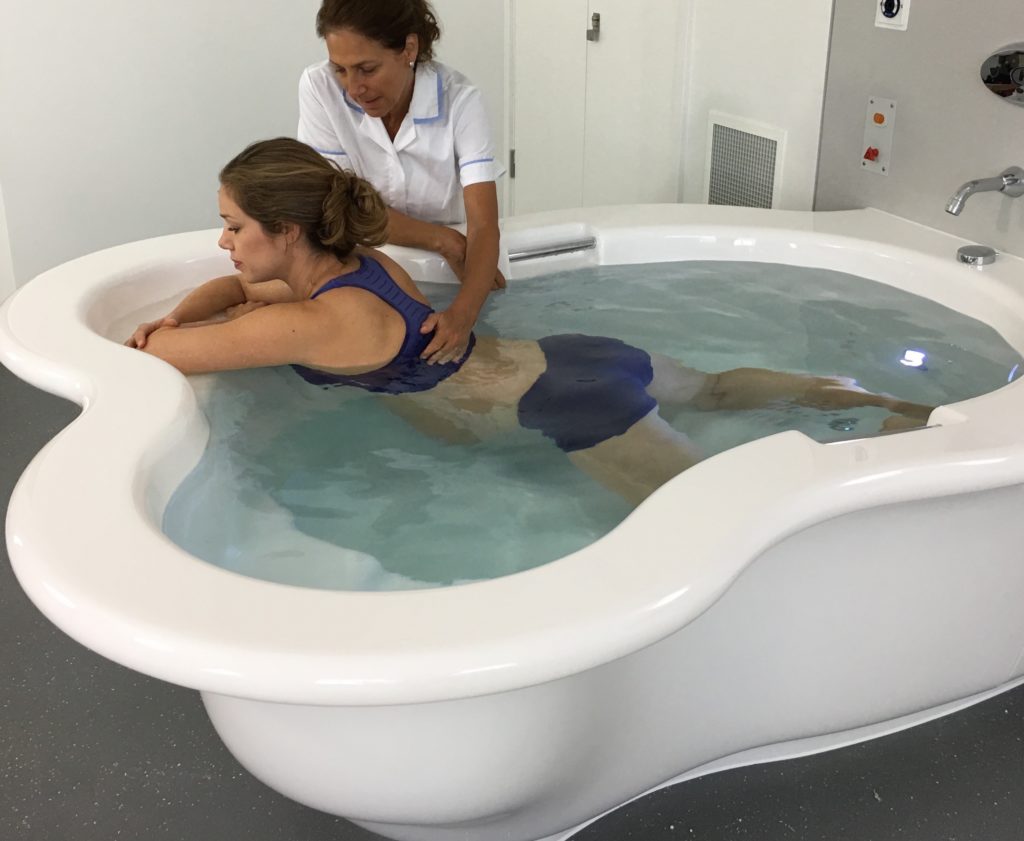Health Times: Karen Keast
Water is a life force in more ways than one – it covers more than 70 per cent of our earth and we drink it to survive.
When it comes to using water for childbirth, water birth is still a contentious issue that divides healthcare professionals and organisations alike.
The fact that it’s contentious at all surprises some of Australia’s leading midwives, writes Karen Keast.
There are legends of Egyptian pharaohs being born in water and of South Pacific women giving birth in shallow seas.
The first written report of a water birth in the western world occurred in France in 1803, when a mother experiencing a long and difficult labour was helped to give birth in a tub of warm water.
In the 1970s, Igor Tjarkovsky, a boat builder, investigated the therapeutic benefits of water and installed a glass tank in his home for women to use for childbirth.
French obstetrician Michel Odent went on to pave the future of water birth.
After a mother, using water to ease the pain of her labour, accidentally gave birth in the water, he went on to install a plastic paddling pool in a hospital so more women could enjoy the benefits of water birth while reducing their need for painkillers.
Only a small proportion of women in Australia choose to give birth in water each year although the exact number of water births is not known.
Griffith University Professor Jenny Gamble, a practising midwife of 30 years, says water births have come a long way in Australia but there is still a long way to go.
Professor Gamble recalls when a new maternity wing opened up at a Brisbane hospital, the then director general who was touring the facility instructed the plugs from the tubs to be removed.
“In his own way, he was saying water births might be a bad thing,” she says.
“Those days are gone. Water has become more accessible to women. There’s quite a lot of evidence to say that water is safe for women.
“More and more hospitals are putting in big tubs and there’s a range of deep tubs. It’s coming but it’s all too slow.”
Advocates of water birth say its benefits include the relaxing effect of warm water and feelings of weightlessness, buoyancy and ease of movement which help to alleviate pain naturally.
Western Sydney University Professor Hannah Dahlen, a privately practising midwife and spokesperson for the Australian College of Midwives, says evidence shows water immersion may also help improve blood flow in the uterus, lower blood pressure, provide less painful contractions and result in shorter labours and fewer interventions.
Professor Dahlen last year published a study in the Journal of Midwifery examining the outcomes of 6144 Australian women who had normal vaginal births in a birth centre over a 12-year period.
Her research compared women giving birth in water with those who gave birth in six other positions out of the water – kneeling or all fours, squatting, side lying, using a birth stool, standing and, the most common birth position in the country – semi-seated.
Professor Dahlen found those who gave birth on a birth stool had almost a one-and-a-half time’s higher rate of major perineal trauma and more than twice the rate of haemorrhage after delivery compared with water birth.
There was no difference in major perineal trauma and haemorrhage after delivery between women who gave birth in water and those who had a semi-seated position.
While those babies born in a semi-seated position had a four-and-a-half time’s higher incidence of five minute APGAR scores less than seven.
APGAR scores, which rate the newborn’s breathing effort, heart rate, muscle tone, reflexes and skin colour, of less than seven at five minutes after birth indicate medical intervention was needed to resuscitate the baby.
“Some studies have shown better outcomes but basically I found no difference to other birth positions,” she says.
“There was no evidence of harm. We want to do more research in Australia.
“We have no evidence to date that it’s harmful but we need more and more evidence to show it’s safe.”
Professor Dahlen says a water birth also provides women with a sense of protected space.
“They talk about how they felt there was a barrier; they felt it was a cocoon where they could feel safe,” she says.
Professor Dahlen says one common concern about water births is that the baby could drown but she says babies are born with a diving reflex, or bradycardic response, that causes them to hold their breath under water.
Professor Dahlen says despite mounting evidence proving the benefits of water birth, they still remain contentious in Australia.
“I have never understood it. I find it fascinating that water is so scary.”
Professor Gamble agrees.
“We’re talking about water, just water – not epidurals, not heavy duty drugs,” she says.
“Thank goodness hospitals are moving towards increasing their remodelling of their maternity suites to include tubs but quite frankly it’s a lot of fuss for something as simple as warm water.”
Professor Gamble says water births are common practice at planned home births, and are used during labour or active birth.
“Some women want to get in and get out for birth, some want to labour in the water and some hop in just for the birth – anything goes.”
Perhaps, most importantly, Professor Dahlen says water births are not about the baby.
“That’s what people get wrong,” she says.
“It’s about the mother and if you have a really happy and relaxed and stress free mother you actually have a baby that’s advantaged – they are born and very placid.
“They don’t often cry – they come up and blink.
“They are breathing fine. They come up all lovely and warm and then go to their mother’s chest.
“I really love water births.”
